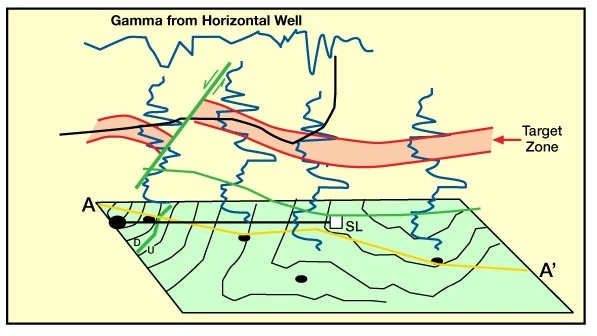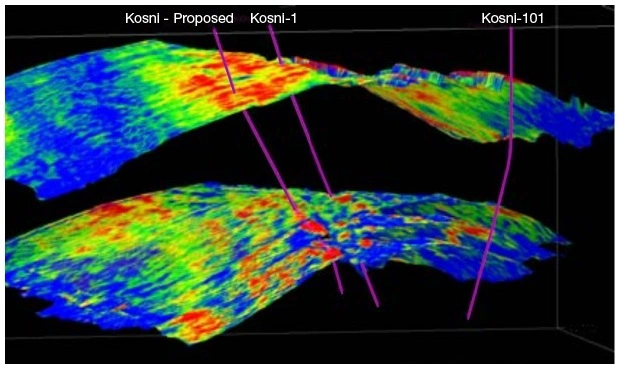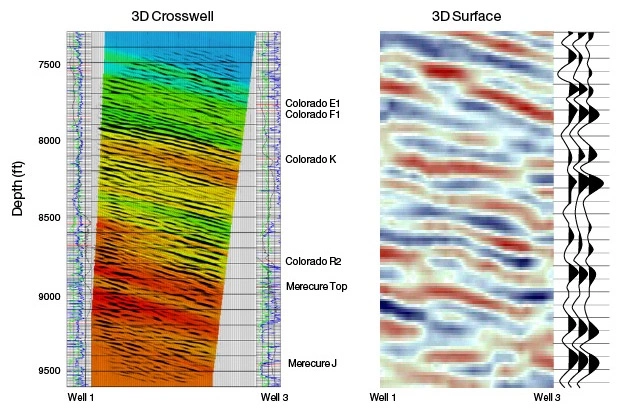Timing of Structural Movements
Structural movements are important to understand in terms of how and when they occur. What causes the movement gives clues as to what is happening beneath the surface of the earth in terms of crustal movement (compressional, extensional, or intrusive, for instance) and types of faulting. Timing is important for fluid migration and maturation.
Figure 1 is a marine section crossing two salt pillows. The section represents 27 km (17 miles) of line. Note how the vertical exaggeration (about 3:1) makes it easy to see the thickening and thinning of different intervals. An interpreter has picked the section at several levels. On the basis of correlations between the section and the wells drilled in the area, the interpreter has identified the intervals between the picks as:
- Lower Tertiary (TL)
- Upper and Lower Cretaceous (KU, KL)
- Lower Jurassic (JL)
- Upper and Lower Triassic (TRU, TRL)
- Lower Permian (PL)
- Zechstein salt (Ze)
The interpreter has also suggested several faults (Figure 1). We see that, as usual, the deep faults are absorbed in the thick and mobile salt section.
The Upper and Lower Triassic maintain substantially constant thickness over and between the salt pillows. The same parallelism seems to be maintained in the lowest part of the Lower Jurassic. We can interpret, therefore, that there was no significant movement of salt until sometime in the Lower Jurassic, at the earliest.
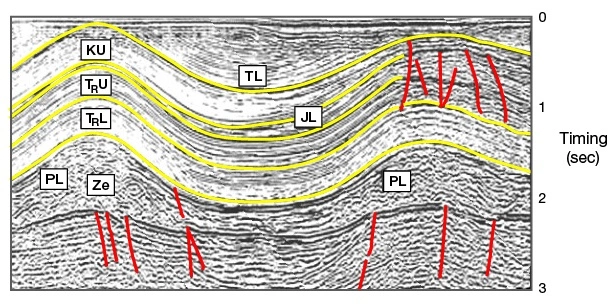
Now we’ll examine what we believe occurred in the subsurface to lead to the image we see in Figure 1.
Depositional and Structural Changes Over Time
During the Lower Jurassic time, the section would have appeared as in Figure 2A. The whole depositional system remained remarkably stable, with the rate of subsidence generally well matched to the rate of sediment deposition.
First we’ll look at the evolution of the left salt pillow, which may have been triggered by rejuvenated faulting in the deep zone below the salt. We do not know (from this one line) what thickness of Jurassic and Lower Cretaceous sediments were deposited, because any Upper Jurassic and Lower Cretaceous sediments which were present have been eroded. However, the thinning of the remaining Lower Jurassic sediments over the left pillow suggests that the salt had moved, and the left pillow had started to form, before this erosion was complete.
Further, the parallelism between the erosional surface and the lowest reflections in the Upper Cretaceous indicates that the erosional surface was substantially horizontal, and the salt had ceased moving, by the early Upper Cretaceous. This situation is shown in Figure 2B.
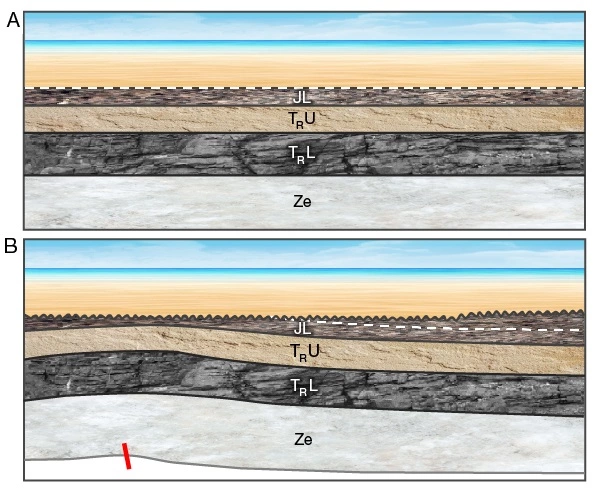
We turn now to the right pillow. Several interpretations are possible; we will discuss only the simplest. The right pillow did not start to form at the same time as the left pillow (Figure 2B). Everything was stable through the period of Jurassic and Lower Cretaceous deposition and erosion; at the end of the erosion a topographic high remained at the right of the line. The salt started to move quite early in the Upper Cretaceous, and continued until about three-quarters of the Upper Cretaceous was in place, then it stopped. We can see the clear pattern of onlap reflections in the Upper Cretaceous during the period of uplift. The uplift to the right pillow, in distinction from the left pillow, caused some drop-down faulting over the crest.
The parallelism of reflections continues through the Upper Cretaceous and into the Lower Tertiary indicating there was no movement of the left pillow during this time (Figure 3A). Then, sometime in the Lower Tertiary, the big uplift started. Looking at the Tertiary reflections just to the right of the left uplift, we see thinning toward the left pillow structure, then a zone of parallelism, and finally renewed thinning. From this, we infer that the salt started to move, stopped again, and then surged upwards (Figure 3B).
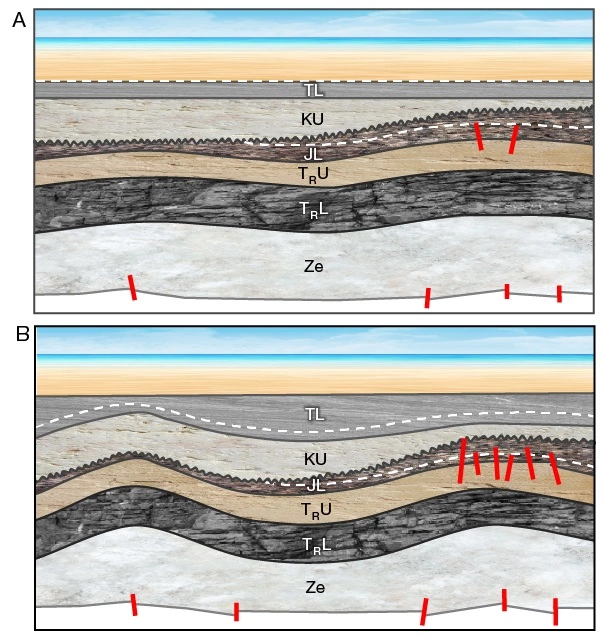
Everything then remained stable until early in the Lower Tertiary (Figure 3A). The right pillow was stationary while the left pillow initially started to move, and then the final movement started on both. During this period the withdrawal of salt from between the pillows caused significant subsidence in the middle of the line (Figure 3B).
Subsequent erosion of the Tertiary sediments led to the situation of Figure 4A. No movement of the left pillow has occurred since that time, and sedimentation is proceeding uneventfully at present (Figure 4B).
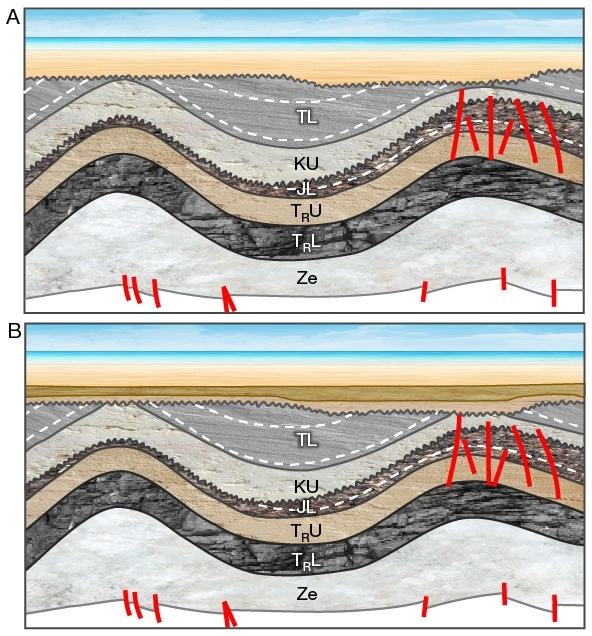
During the final erosion, the collapse faulting over the right pillow hastened the erosion. A valley also developed, and broadened to the left of this pillow (Figure 4A). Since then, the valley has been filled, though differential compaction of these young sediments has caused some draping into the valley (Figure 4B).
Figure 5 provides a different salt example. This shows a salt wall, some 7 km (4.4 mi) in width, which once broke to the surface. This dramatic example gives us an excellent record of the salt movement. The figure shows seismic with a velocity overlay; salt velocity is in yellow.
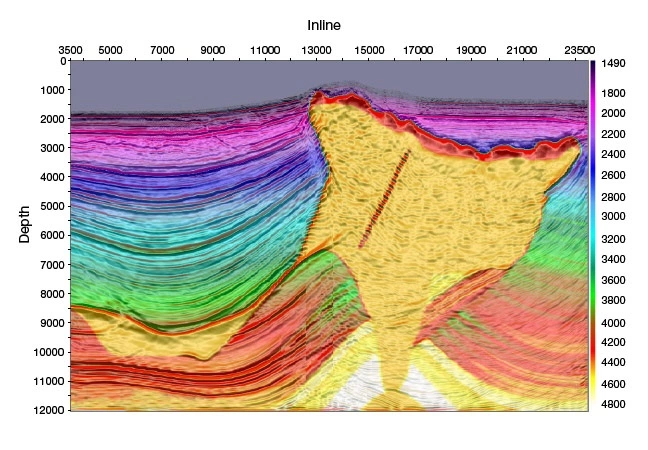
Figure 6 illustrates complete withdrawal of salt from the area between two pillows. Extensional subsidence in this area has ruptured the Triassic rocks, and salt has filled the space between them. The right pillow has created a fault of very considerable throw.
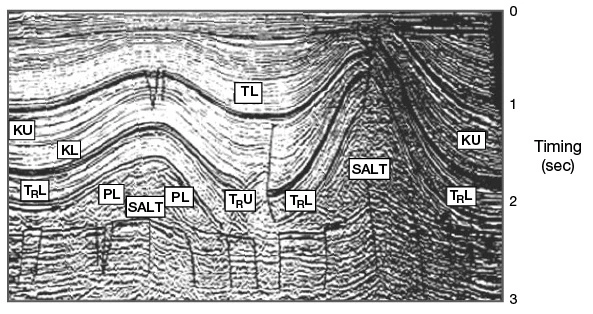
These examples are dramatic, brought about by the extreme mobility and low density of salt. In some areas, similar effects can be caused by mobile shale. However, the techniques which we learn from these dramatic examples are an excellent guide in establishing the order of events in geologic time. The importance of these events to the interpreter is significant.
Salt movement is only one type of structural movement we might encounter during interpretation. Let’s look at another type of structural movement. In Animation 1, we see a sedimentary series with the potential for petroleum accumulation. As the subsurface changes over time, and fluid migration occurs from the source rock to the reservoir rock, we see the importance of the timing of trap formations.
This animation shows why we have no interest in traps which formed after the migration of hydrocarbons was complete. As an area develops, some structures contain oil or gas, and others do not. The interpretation task, then, is to relate the drilling success to the timing of structures, and to propose drilling locations only on those structures which are of sufficient age. This is a very important skill.
 Petro Shine The Place for Oil and Gas Professionals.
Petro Shine The Place for Oil and Gas Professionals.

